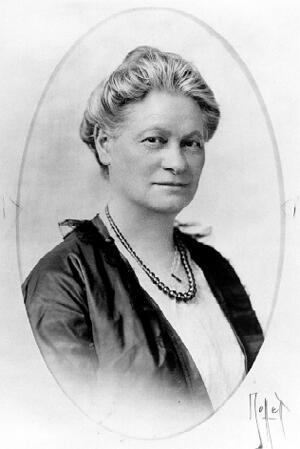Unprecedented Jewish Women's Congress Meets in Chicago
On September 4, 1893, the Jewish Women's Congress opened as part of the World Parliament of Religion at the 1893 Chicago Columbian Exposition. Press accounts of the Congress reported that "women elbowed, trod on each others toes, and did everything else they could without violating the proprieties" to find a place in the overcrowded hall. Over four days, they heard 25 women from all over the United States, many of whom had never spoken publicly before, address questions of Jewish women's roles in religion, history, and philanthropy.
The Congress was primarily the result of work by Hannah Greenebaum Solomon, who by 1893 was already a prominent Chicago activist. Born on January 14, 1858, Solomon and her older sister Henriette were the first Jews admitted to the elite Chicago Woman's Club in 1871.
Solomon's commitment to creating a Jewish women's congress was fostered when male organizers of a proposed Jewish Congress demonstrated no inclination to offer women any meaningful role on their program. She worked with other women from Chicago's ultra-Reform Congregation Sinai to bring together an unprecedented formal gathering of Jewish women from around the country.
On the last day of the Congress, the assembled delegates voted to create a permanent organization, the National Council of Jewish Women [NCJW], with Solomon as its first president. Under her leadership, the Council grew to 3300 members in fifty sections in its first three years. Noting that secular organizations could provide social services as well as sectarian ones, Solomon sought to steer the NCJW toward religious renewal as its primary goal. To that end, she fostered study circles designed to encourage women to renew their commitment to religion.
The Jewish Women's Congress and formation of NCJW represented and spurred a growing trend toward organization and activism among American Jewish women, crystallizing a new public identity that shaped their contributions to their communities and synagogues throughout the 1890s and into the twentieth century. Today, the NCJW works through over 100 sections nationwide on advocacy for women and children in both the U.S. and Israel.
Sources: Chicago Tribune, September 5, 1893; Faith Rogow, Gone to Another Meeting: The National Council of Jewish Women, 1893-1993 (Tuscaloosa, 1993), pp. 9-35; Jewish Women in America, An Historical Encyclopedia, p. 1283; Karla Goldman, Beyond the Synagogue Gallery: Finding a Place for Women in American Judaism (2000), pp. 185–189; www.ncjw.org.



